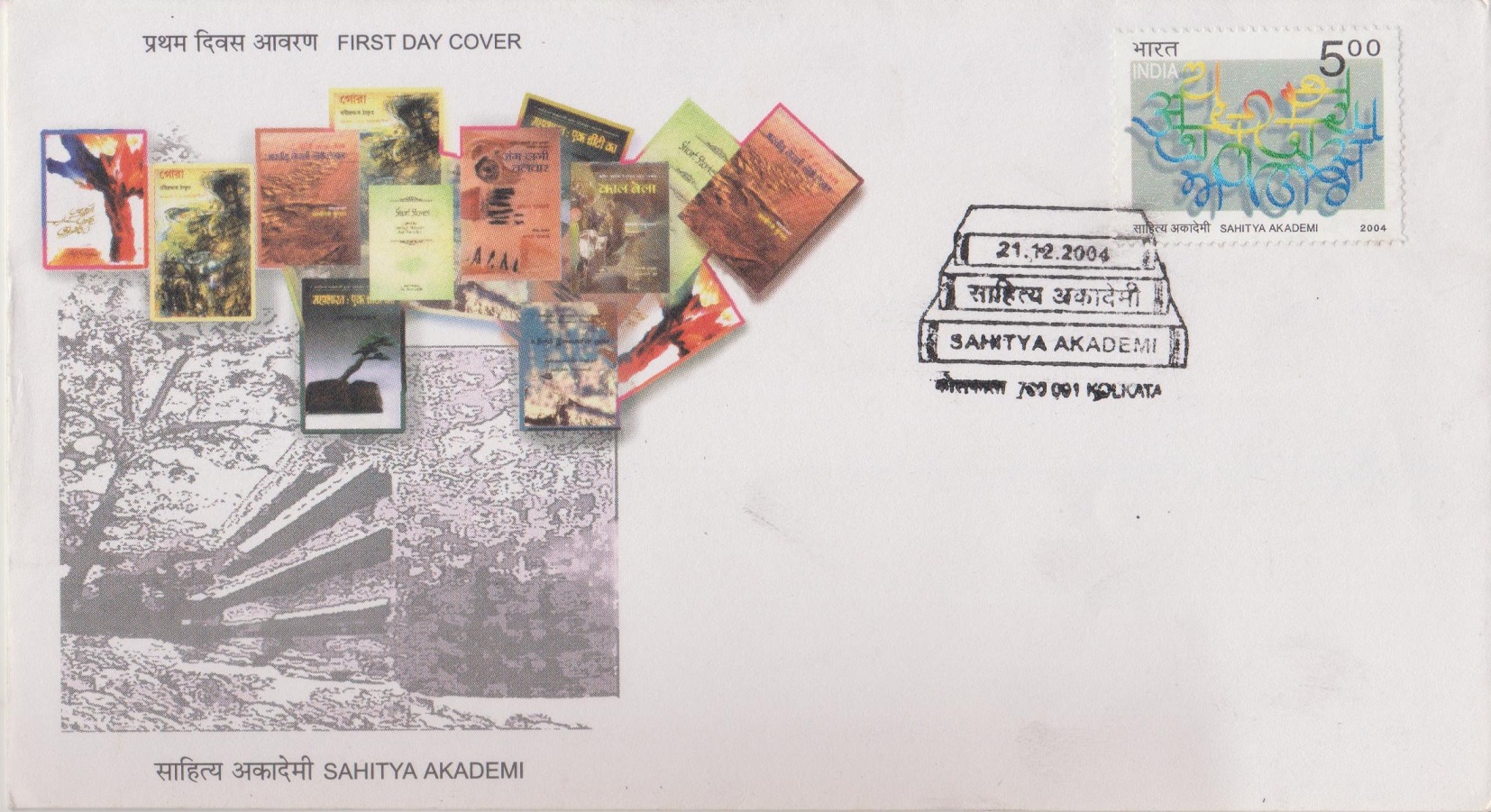
Sahitya Akademi
A commemorative postage stamp on the 50th Anniversary of Sahitya Academy, India‘s National Academy of Letters :
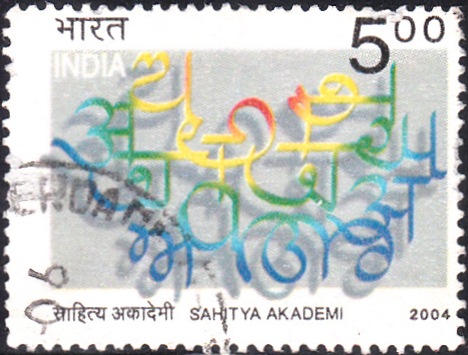
 Issued by India
Issued by India
Issued on Dec 21, 2004
Issued for : The Department of Posts is happy to issue a commemorative postage stamp on Sahitya Akademi.
Credits :
Stamp & FDC : Bharati Mirchandani
Cancellation : Alka Sharma
Type : Stamp, Postal Used
Colour : Multi Colour
Denomination : 500 Paise
Print Quantity : 0.8 Million
Printing Process : Photogravure
Printer : India Security Press, Nashik
About :
- Sahitya Akademi is not only the premier institution in the country for literary dialogue, publication and promotion but also the only institution in the country that undertakes literary activities in twenty-four languages, including English. Set up in 1954 by the Government of India as a autonomous organization fully financed by the Government, Sahitya Akademi has ceaselessly endeavoured to promote good taste and healthy reading habits, to keep alive the intimate dialogue among the various linguistic and literary zones and groups contributing to the emotional integration of the nation through seminars, lectures, symposia, discussions, readings and performances. The policies and programmes of Sahitya Akademi are decided by its General Council and Executive Board consisting of eminent writers and academics and is assisted by advisory boards in each recognized language. It has an elected President who chairs the various councils and committees and a Secretary as the Chief Executive. The governing and advisory bodies are freshly constituted every five years. The functioning of Sahitya Akademi is totally democratic and decentralized. It has a Head Office in Delhi and offices in Mumbai, Kolkata, Bangalore and Chennai.
- Over 50 years of its dynamic existence, it has published over 4300 books in 22 Indian languages. It publishes two bi-monthly journals – Indian Literature in English and Samkaleen Bharatiya Sahitya in Hindi – which carry translated literary pieces from different languages. It also publishes a half-yearly journal in Sanskrit, Samskrta Pratibha. Sahitya Akademi runs projects for the propagation of tribal-oral literature and translation.
- The highest honour conferred by Sahitya Akademi on a writer is by electing him a Fellow. This honour is reserved for the “immortals of literature” and limited to twenty-one at any given time. So far 66 writers have been awarded the Fellowship.
- Sahitya Akademi gives awards for creative/critical writing and Translation Prizes in each of the recognized languages every year and has given 850 awards since its inception for original books of outstanding merit and 302 Translation Prizes since 1989 for books of translation. Apart from these awards, the annual Bhasha Samman has also been instituted since 1996 which is given to scholars and writers for their contribution to languages not recognized by the Sahitya Akademi and to Classical and Medieval literature. So far 35 writers and scholars have been honoured with the Bhasha Samman.
- Seminars on literary topics at regional, national and international levels as well as literary workshops are also organized to provide a platform to the writers of the different languages for interchange of ideas. It also conducts programmes such as Meet the Author, Men and Books, Through my Window, Asmita, Mulaqat, Kathasandhi, Kavisandhi, Kavi–Anuvadak, Loka: The Many Voices, Antaral and Avishkar. More than 200 such programmes are held every year.
- The Sahitya Akademi Library is one of the prominent multilingual Libraries in India and has a wide range of books numbering over 1.27 lakhs in more than 25 Indian and foreign languages. The offices at Bangalore and Kolkata also maintain regional Libraries with sizeable collections.
- Under the Archives of Indian Literature Project Sahitya Akademi collects and preserves material connected with writers. So far films on more than 50 writers have been produced and there are several audio and video recordings, photographs and manuscripts.
- There is hardly any significant writer or translator in post-Independent India who has not taken part in an Akademi programme or undertaken a project. Sahitya Akademi has built bridges among communities, regions and languages and has provided a meeting ground for writers of diverse attitudes and ideologies.
- Text : Based on material given by the proponent.


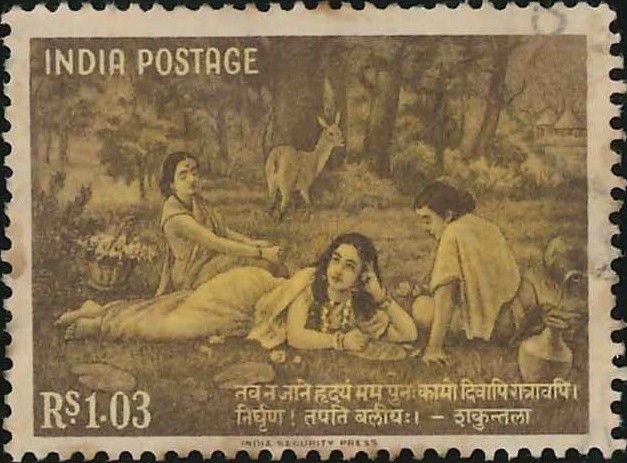


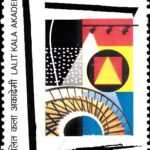
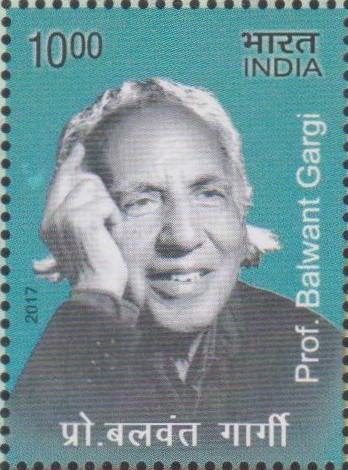
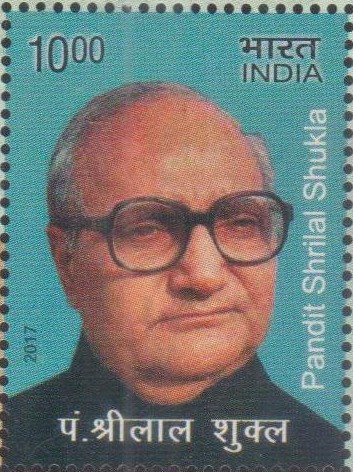
[…] Vyakti ani Valli, the collection of sensitive pen sketches of ordinary people, earned him the Sahitya Academy Award. Tee Phoolrani and Teen Paishacha Tamasha were two adoptions from Shaw’s ‘Pygmalion’ […]
[…] Bengali which still remain uncollected. Among many honours received in India and abroad, he got the Academy Award for his Mahabharat-based play “Tapasvi o Tarangini“ in 1967 and […]
[…] injustice, he also possessed tender sensibility. An excellent prose writer, he received the Sahitya Academy Award for his study “Sanskriti Ke Char Adhayaya” (1956) and his verse play “Urvashi” was […]
[…] Narayan received several awards and accolades for his work : the Sahitya Akademi Award for ‘The Guide’ (1960), the Padma Bhushan for distinguished service to Literature […]
[…] A prolific writer and poet, he has to his credit as many as 14 published collections of poems besides innumerable unpublished poems. His contribution to Assamese language and literature also includes 5 thought-provoking books and a dozen unpublished manuscripts. He was twice elected President of the Assam Sahitya Sabha. He was made Fellow of the Sahitya Akademi. […]
[…] very high position in the field of Indian letters. He has been deservedly honoured by the Sahitya Akademi as one of the makers of modern Indian Literature. Born in 1868 in a well-known family of Assam, […]
[…] the Jnanpith Award, the highest Indian literary award, in 2011. His first major award was the Sahitya Akademi Award for his novel Raag Darbari in 1969. He received the Vyas Samman award in 1999 for the novel […]
[…] his writings reflect a purpose and are thought-provoking. Shri Gopichand was presented with a Sahitya Akademi Award in 1963 for his work “Panditha Parameshwara Sastry Veelunama”. He rendered invaluable […]
[…] : Courtesy Sahitya Academi, New […]
[…] : Courtesy Sahitya Academi, New Delhi. The painting ‘Varsha’ has been used for the designing of the stamp on Mahadevi […]